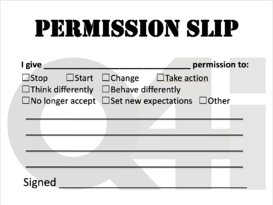The art of leading a productive and enlightening conversation is at the essence of success. Whether you’re conducting a job interview, talking to a client, or working with your team, you need the power to get as much out of every conversation as you can.
You need to inspire, to be purposeful and clear, to obtain and share quality information, and to connect on a human level—all of which needs to happen naturally and in as few words (of yours) as possible.
Here are a few key points you can apply to nearly every conversation you have, amplifying your impact, takeaway, and position.
Who’s at the center?
Leading a quality conversation doesn’t mean you become the focal point. Most of the time, if you position the other person at the center, you can make a greater impact. You can make the other person think you’re the most interesting person in the world, or they can leave the conversation feeling they are the most interesting person in the world.
Which would you prefer? Be honest with yourself.
While you might impress some people by espousing your thoughts, experiences, and opinions, it will do little to help you connect with and learn from them. This brings us to a critical point: setting your intention. If you want to lead a conversation where everyone goes away with your opinions and ideas swirling around in their heads, then sure, get on your soapbox and talk away.
BUT, if you intend to get information from someone while also connecting with them personally, then your focus should be on them.
Listening to hear, not to speak
Imagine a microphone: the only thing that comes out of it is what is said into it. Having a conversation with someone who spends their time waiting to speak is like becoming a microphone for the other person. It’s not fun. Or rewarding. Or engaging.
It’s just exasperating.
So how do you avoid being the person who only listens long enough to find an opportunity to speak? The first step is slowing down. Remind yourself why you are having the conversation. Ask yourself what it is you’re hoping to gain. Then ask yourself how you’re going to get there. I promise you, the answer isn’t by talking.
Learn how to ask questions
While you’ve known how to ask questions since you first learned to talk, it doesn’t mean you know how to ask the right questions.
Let’s look at two similar questions and see how they evoke wildly different responses:
- Did you feel happy when you got the new job?
- What was it like to get the new job?
One quick way to stop a conversation in its tracks is to ask leading or closed-ended questions. These are questions that push the response in a specific direction and simply require a yes or no answer.
What would you say if someone asked you the first question? Probably something like, “Yes, I did feel happy!” While that isn’t a bad answer, it doesn’t leave room for you to add anything else. The answer sits within the original question: “Happy,” prompting no additional thought or introspection
Now think about answering the second, open-ended question. There’s no obvious response. Your answer could go in many different directions, allowing richness and depth to develop within the discussion. Those are the types of questions you want to be asking if you’re looking for value.
Don’t resist the awkward pause
While no one loves to sit in silence, learning to do so comfortably can create something amazing. Think about the landscape of your conversation as a jumble of marbles on a mattress. You go from one marble to the next in a sometimes straight, sometimes meandering line. But there will always be marbles that don’t get picked up.
Now, think about silence as a bowling ball put down in the center of the mattress. The ball’s weight creates a physical pull on the outlying marbles, coaxing them to roll into the dent left by the bowling ball and into the center of the conversation.
Give your conversation some intentional bowling balls. Make way for those stray thoughts or shy opinions to be pulled to the center and realized.
Move with purpose
As you practice leading conversations that produce real value, help you authentically connect, and make progress, take the time to reflect. After an especially frustrating or exciting conversation, stop and go over what made it successful or not. This process takes self-awareness, intention, and purpose. Take your time, work at it, and watch as each interaction you have becomes more valuable, impactful, and satisfying.
Photo by rawpixel
Content provided by Q4iNetwork and partners
![]()







